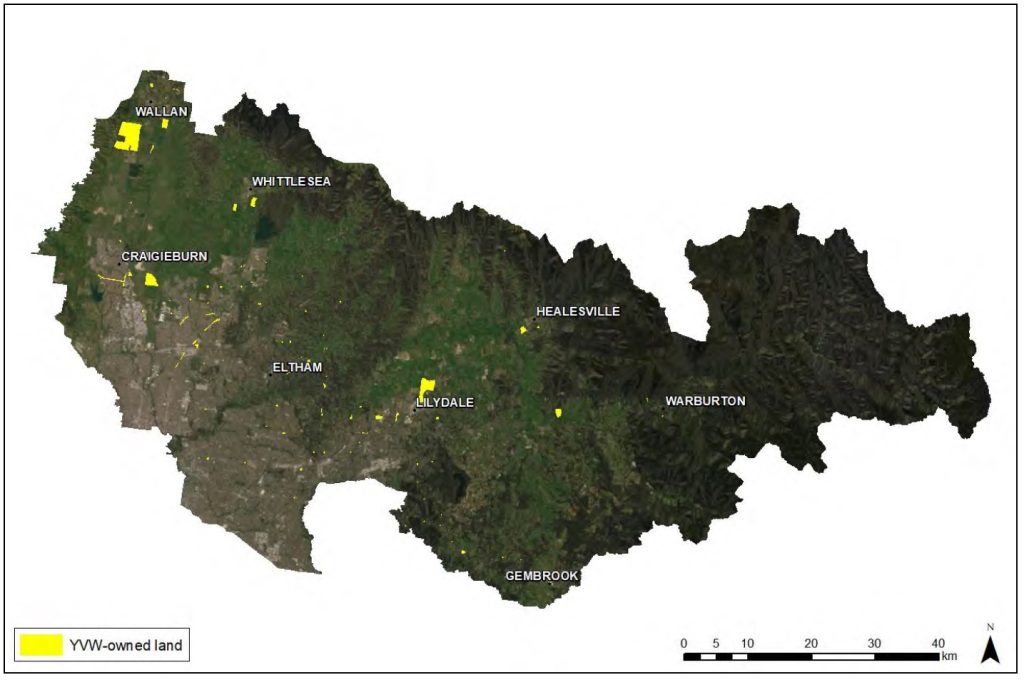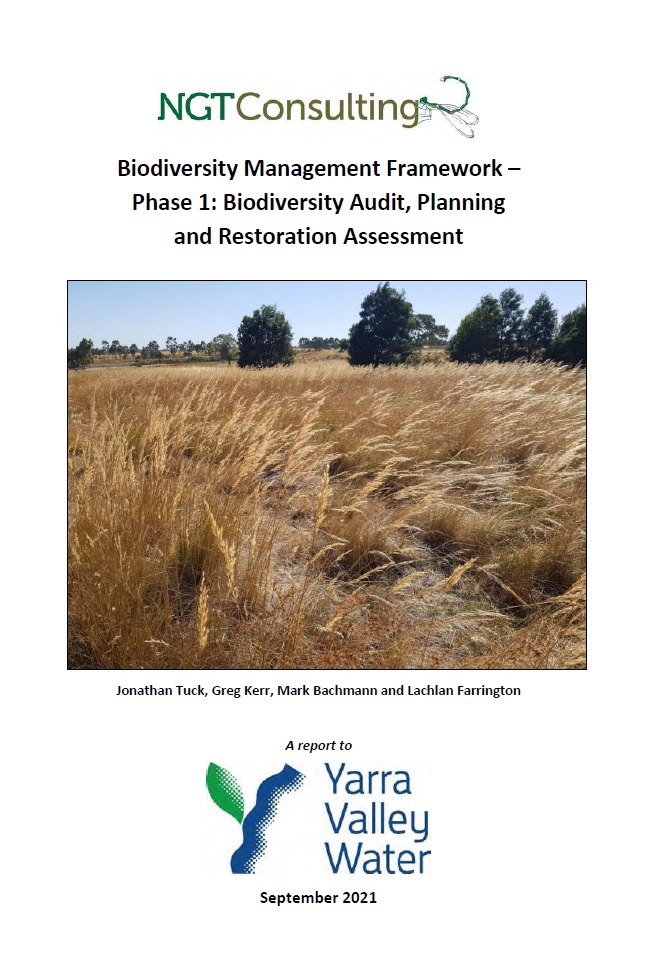Working with a water utility to foster better outcomes for biodiversity
In its newsletter this month, the Australian Water Association featured a great story about how the Yarra Valley Water (YVW) 2030 Strategy has provided the foundation for the organisation to take a closer look at how it approaches sustainability across its business. A key area of focus that subsequently emerged for YVW is “healthy ecosystems”, which required taking a deeper look into biodiversity issues on land that YVW manages. It was at this point about 18 months ago that YVW engaged Nature Glenelg Trust to undertake an ecological assessment of all of its land holdings across Melbourne.
To read the Australian Water Association article, please click here.


Being a water authority, the size, shape, location and purpose of land held is highly variable, and – although this land has a clear operational focus (think pipelines, tracks, tanks and water treatment plants) – we were pleasantly surprised by what we uncovered on a number of occasions.
This is because some of the interesting places where YVW holds land either retain impressive residual or remnant biodiversity values, or are strategically located in, near or connected with natural features (e.g. grasslands, woodlands, waterways and wetlands) which could have their environmental values enhanced in some way (revegetated, restored and/or regenerated). We also identified that there is a tremendous opportunity to genuinely partner with First Nations people in the positive work that might emerge as a result of the assessment.
As well as providing the basis for YVW to decide how and where it will enhance biodiversity on its land holdings, it has been fantastic for our team at NGT to gain a deeper insight into the complexities surrounding the functioning of a major water utility, and how operational considerations by necessity interact with land management. This work has also really highlighted the biodiversity land management opportunities that exist in the water utilities sector – which is often not traditionally thought of in this way.
Yarra Valley Water staff will be presenting in May on the outcomes of the assessment and what it means for their business at the OZWATER’22 Conference in Brisbane, and we look forward to continuing to work with YVW to assist with their vision of supporting healthy ecosystems over the decade ahead.
Finally, a big thanks to the many YVW staff who have invested their time into this important work, and a special mention in particular to the project steering committee members (Kathryn Naylor, Alice Greenhill, Ruth McDonnell and Francis Pamminger). NGT staff who contributed their expertise to the project were Jonathan Tuck, Greg Kerr, Lachlan Farrington and myself.
This project was an initiative of:

